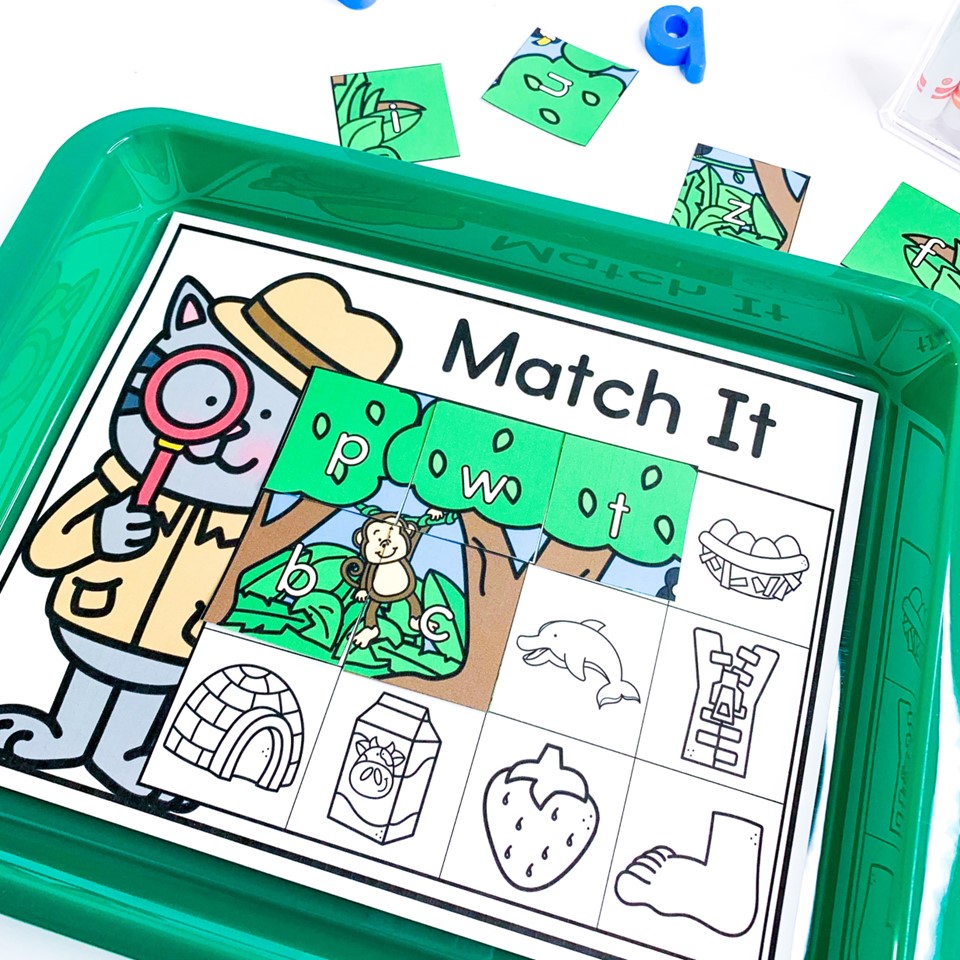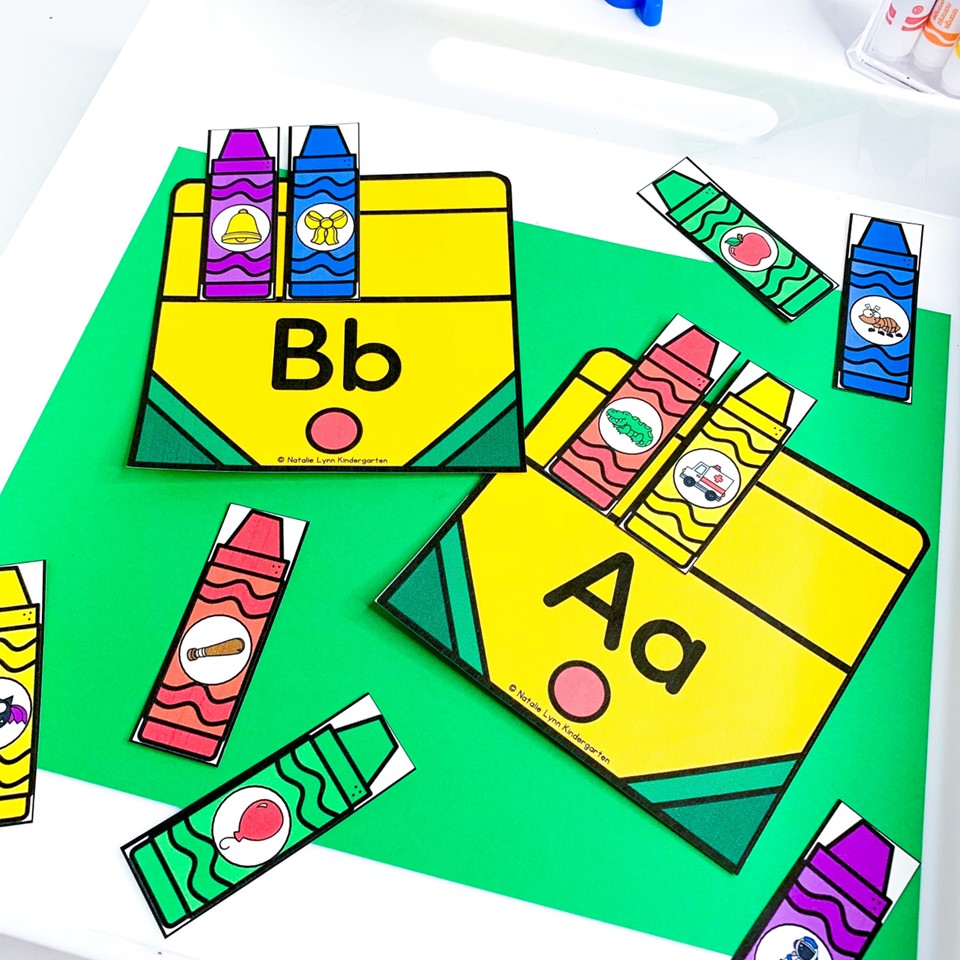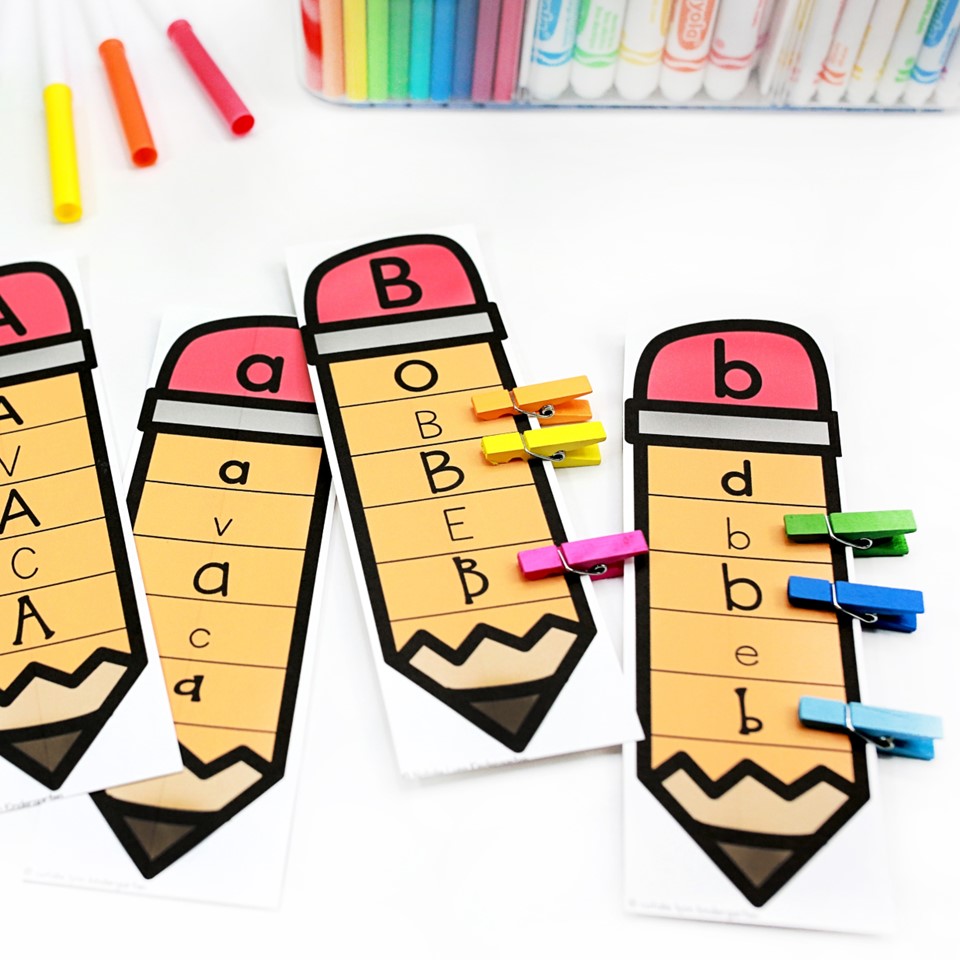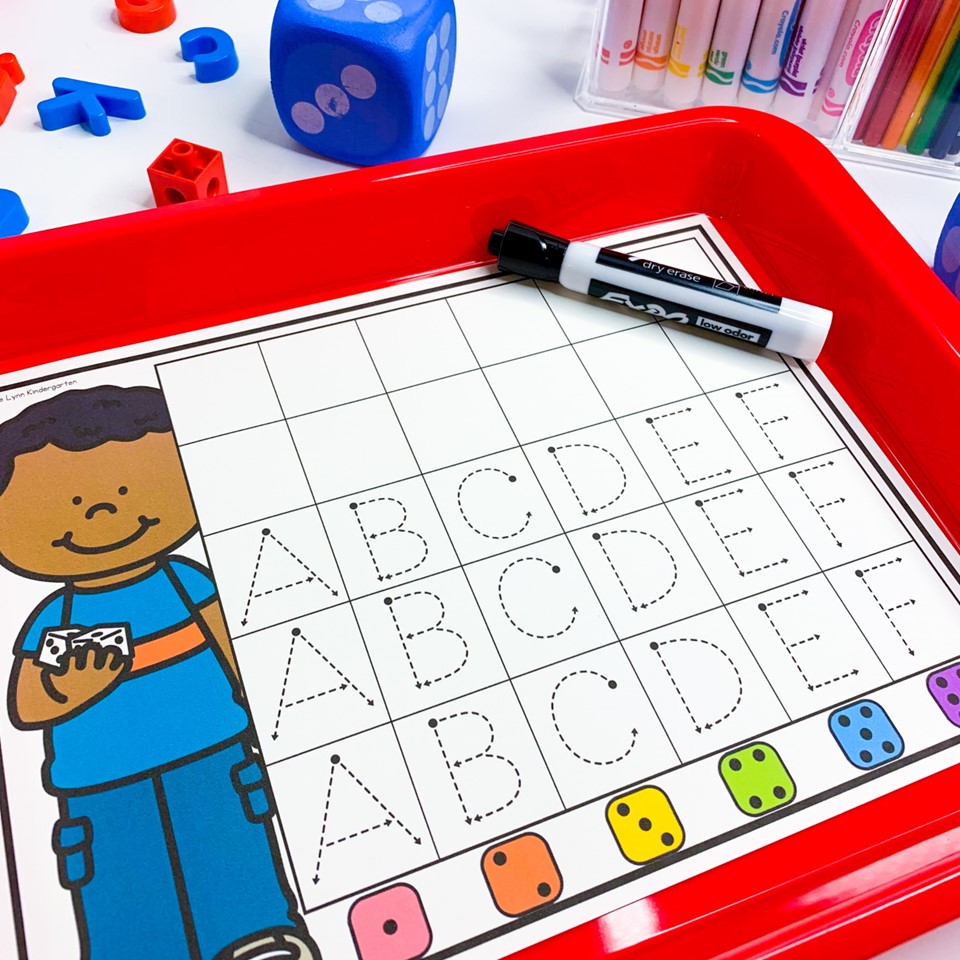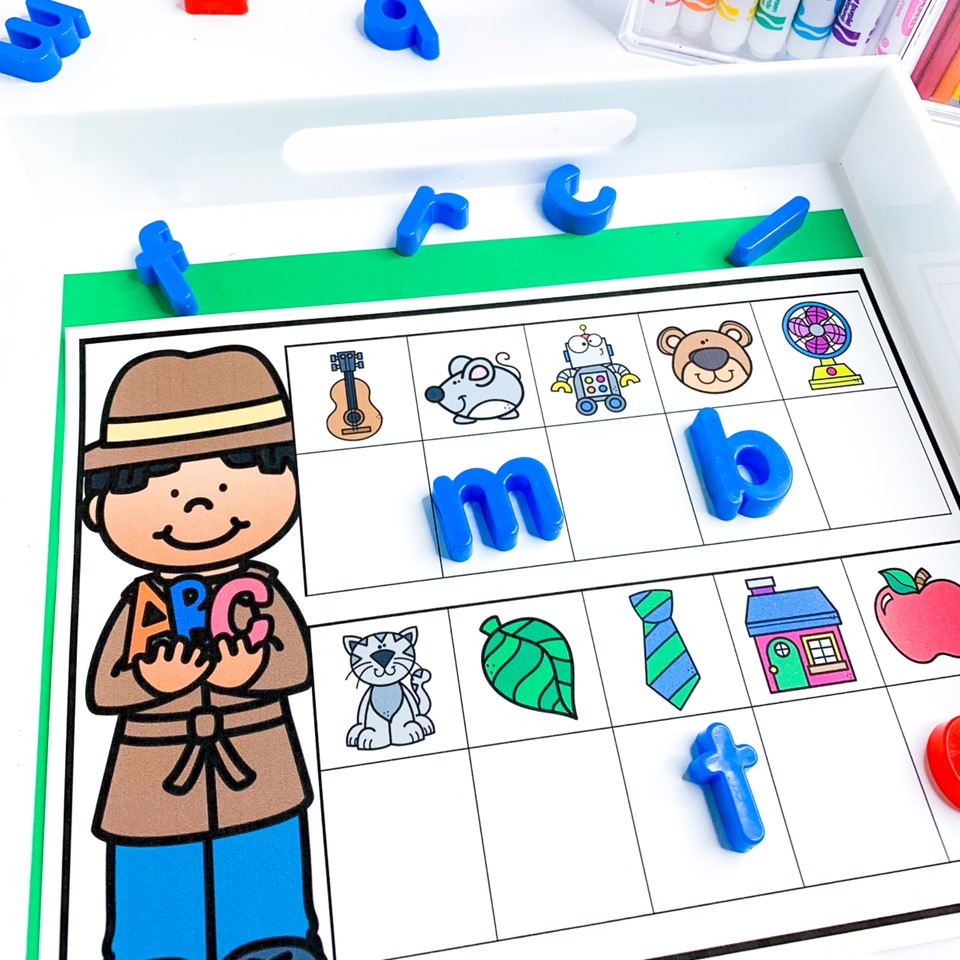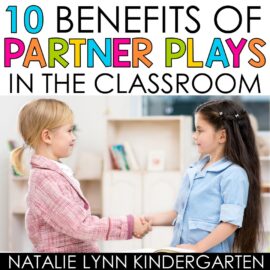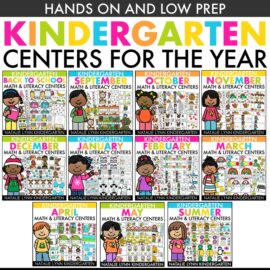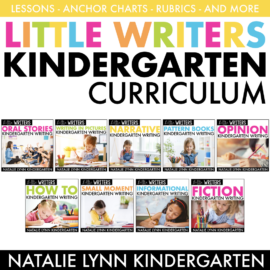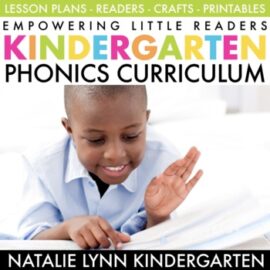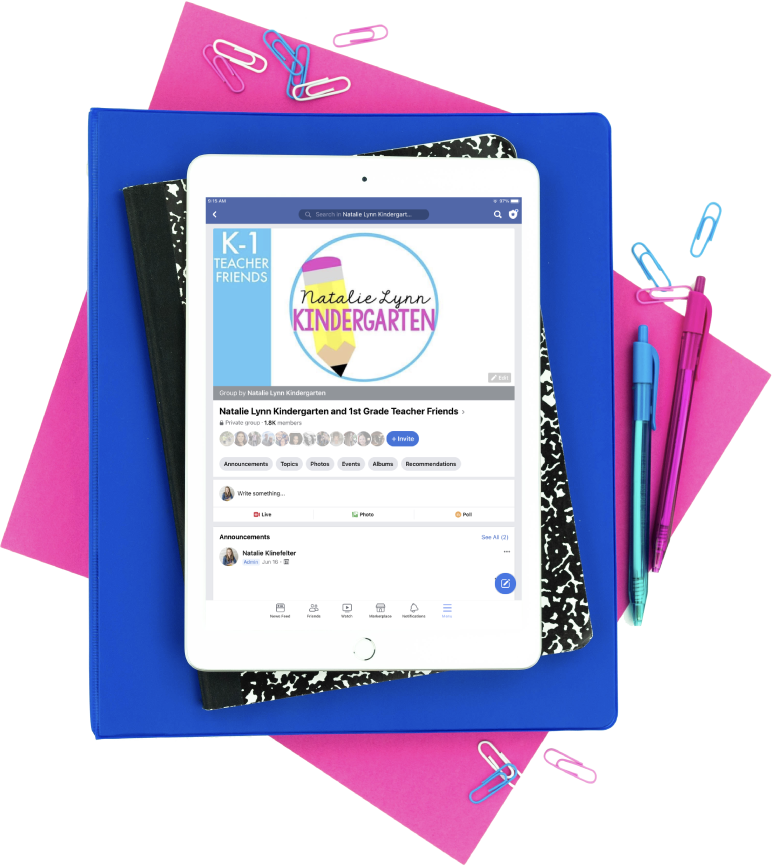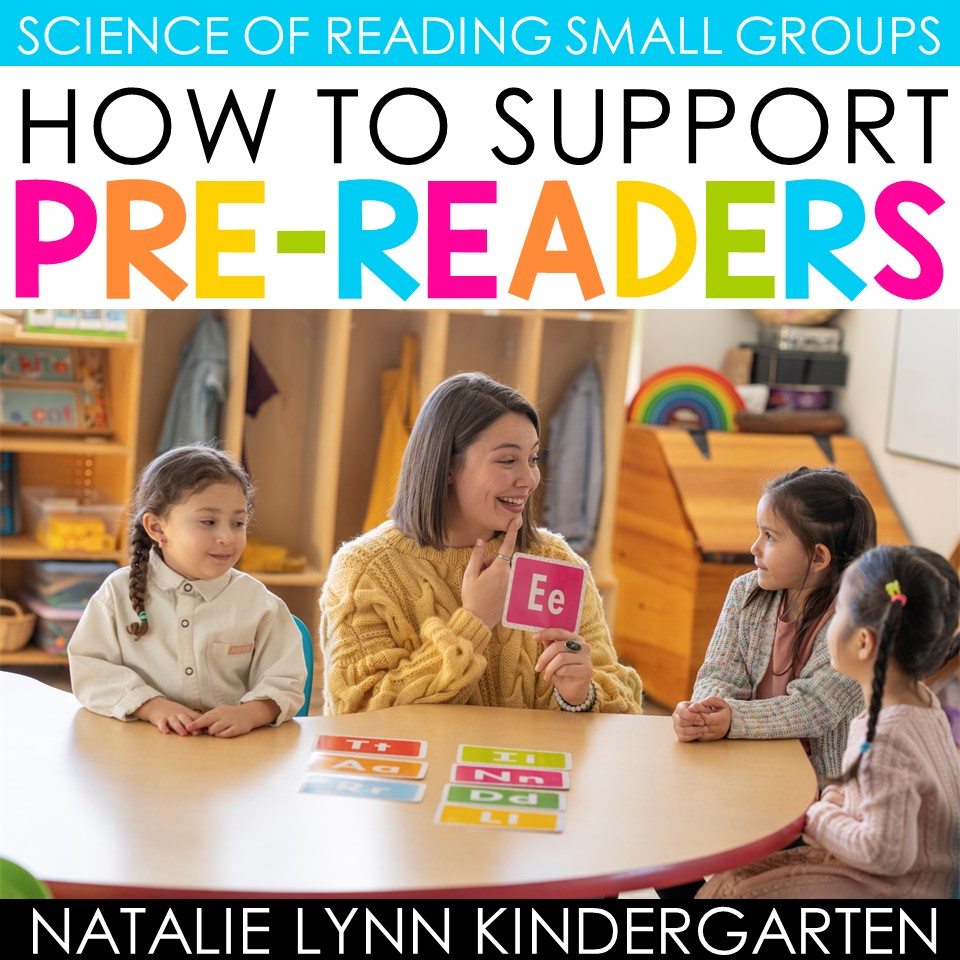
In this blog post: You’re ready to begin your Science of Reading aligned small groups, but what do you do with students who don’t know letters and letter sounds yet? Find out the best ways to support your pre-readers in reading groups below.
When students begin learning to read, it’s like watching as something “clicks” or as a light bulb turns on. But for your students who aren’t reading yet, it can sometimes feel overwhelming to get them there.
Trust me, I know.
One way to support students at varying levels of literacy is through small group instruction.
Small group time can feel especially difficult to plan for your pre-readers who haven’t had that magical “click” yet, but it doesn’t have to be!
Especially when you take a Science of Reading aligned approach to teaching small groups.
Learn more about who exactly your pre-readers are and what engaging activities are available to support them during small group time.
Who are pre-readers?
Pre-readers are your students who are not quite ready to read yet.
These students are still building phonemic awareness skills such as identifying letters and letter sounds. They are also working on concepts of print and book handling.
Students must build these skills in order to begin decoding and reading words.
Many of your students are probably pre-readers when they enter Kindergarten, although as I said above, you may also have students all along the reading continuum.
What skills should pre-readers be working on?
Now that we know who our pre-reader students are, it’s important that we target skills that will actually help them learn to read!
Here are a few of the skills that you should target during small group time:
- Letter identification
- Letter sound identification
- Phonological awareness
- Phonemic awareness
- Alliteration
- Rhyme
- Isolating sounds
- Identifying same and different sounds
- Concepts of print
- Building vocabulary
How can you support pre-readers in small groups?
Sometimes supporting pre-readers can feel overwhelming because it feels like you have so far to go to get them reading. However, having focused literacy instruction during this time helps students master the skills they’re working on in a smaller, targeted setting. Take a look at these ideas for supporting pre-readers during your small group time.
Make Time for Phonological & Phonemic Awareness
Students should be practicing phonological and phonemic awareness during every.single.lesson. This is necessary because students need to build this awareness in order to progress as readers.
You can easily add this in by choosing a quick phonological or phonemic awareness activity as your lesson warm up. This can take just 1-2 minutes but it has a big impact on your pre-readers!
Ideas for Implementation: Say an alliteration sentence that begins with the target sound and have students identify the repeated sound.
Introduce Individual Letter Sounds
Introduce an individual letter sound during each lesson. This gives students targeted practice with one specific letter. When introducing it, tell students the sound and show them how it’s formed.
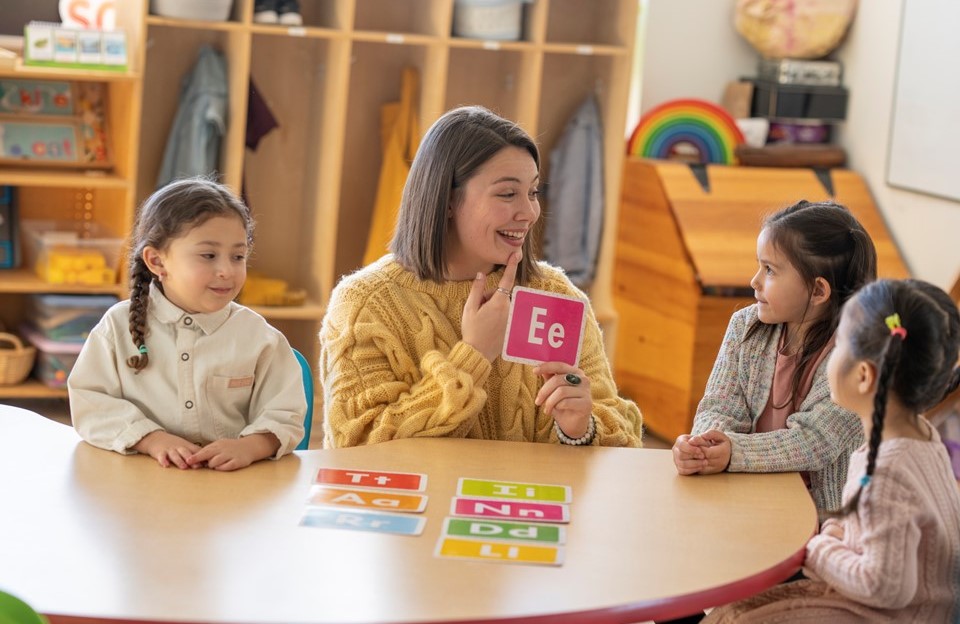
This sounds like: Today we are working with the sound /a/. Can you repeat the sound /a/? When I say /a/, my mouth opens like this. You try.
Ideas for Implementation: Give students little mirrors to allow them to watch themselves form the sound.
After, introduce the letter that makes that sound.
This sounds like: We write the sounds /a/ with the letter Aa. This is the letter Aa. Can you say Aa /a/?
Add in Alphabet Motions
Adding in motion appeals to the kinesthetic side of learning. Motion engages students while also helping them more easily recall letter sounds.
Ideas for Implementation: You can attach a corresponding motion to each letter, like having students make a scared face for the letter Aa and saying /a/ or bouncing a ball for the letter Bb as they say /b/.
Add MORE Phonemic Awareness
Just when you think you’ve added enough phonemic awareness, add a little more! Practice makes perfect, and the more practice students have with phonemic awareness, the more prepared they’ll be to begin blending and decoding which will be their next step in the reading process.
Ideas for Implementation: Have students identify whether words begin with the target letter sound or sort pictures by beginning sound.
This is a great follow up to your alphabet letter mini lesson. Students get the opportunity to practice listening for the target sound and hearing it in context.
Tip: When sorting pictures by beginning sound, use the new letter sound and a sound that you know students are secure in.
Use Alphabet Decodable Readers
It’s never too early to have students practice reading! Alphabet Decodable Readers feature only the letter and a corresponding picture, so students aren’t asked to read words they can’t decode yet.
Alphabet decodable readers are a great way to help our students recognize that print represents spoken sounds.

How to use: Students will point to the letters and read the sounds. Then they will say the picture. This sounds like “/a/, /a/, apple.”
These books also help students by helping them master print concept skills such as one-to-one or directionality. They can also be used to build vocabulary..
Ideas for Implementation: When introducing these alphabet decodable readers to students, do a picture walk with students and allow students to identify what picture they see on each page. This is a good time to clarify any pictures and teach new vocabulary, if needed.
Practice Handwriting
Reading and writing go hand in hand. Once students are ready to read, we need to give them practice with writing too. By practicing handwriting and letter formation now, we can build automaticity and free up brain space for our students.
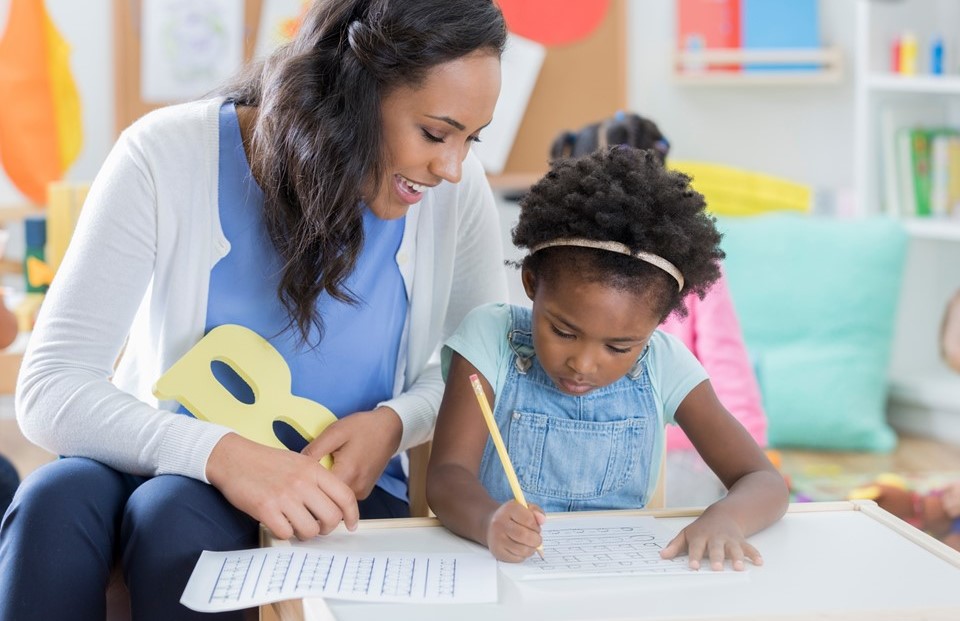
Ideas for Implementation: Handwriting and letter formation is most effective when taught using multisensory activities such as writing on top of textured paper such as sandpaper, writing in a sand tray, writing on a sensory gel bag, or rainbow writing.
Planning Your Small Group Lesson Plan
You can follow this simple lesson plan format for your Science of Reading aligned small groups with pre-readers:
- Phonological or phonemic awareness warm up
- Alphabet mini lesson
- Letter sound sort (or other sound-focused activity)
- Introduce any new vocabulary
- Alphabet decodable reader
- Letter sound fluency activity
- Letter formation practice
Want to save time and have all of your lessons already planned out + all of the materials you need at your fingertips? Then you need the Science of Reading Guided Curriculum.
The Science of Reading Guided Curriculum Unit 1 Pre-Readers includes:
- 26 alphabet lesson plans
- 26 alphabet decodable readers
- Letter fluency pages
- Letter sound sorts and letter formation worksheets
- Alphabet posters
- Mouth formation posters and cards
- Letter formation prompts and practice
Get this all + everything you could ever need for Science of Reading aligned small group instruction in the Science of Reading Guided Curriculum here!
Continue to review, review, review!
Once you teach a letter and letter sound in small groups with pre-readers, you will want to give them plenty of opportunity to review and practice.
Ideas for reviewing letter sounds:
- Add the alphabet decodable readers to student book bins.
- Let students practice reading with a partner with Alphabet Partner Decodable Readers.
- Students can make their own alphabet mini books to read and take home.
- Use alphabet decodable passages in small groups or as a practice activity.
- At the beginning of your small groups, say a letter or sound and have students find it on an alphabet chart.
- Begin your day with an alphabet chart routine.
You can grab the FREE small groups toolkit which includes an alphabet chart with real photos here:
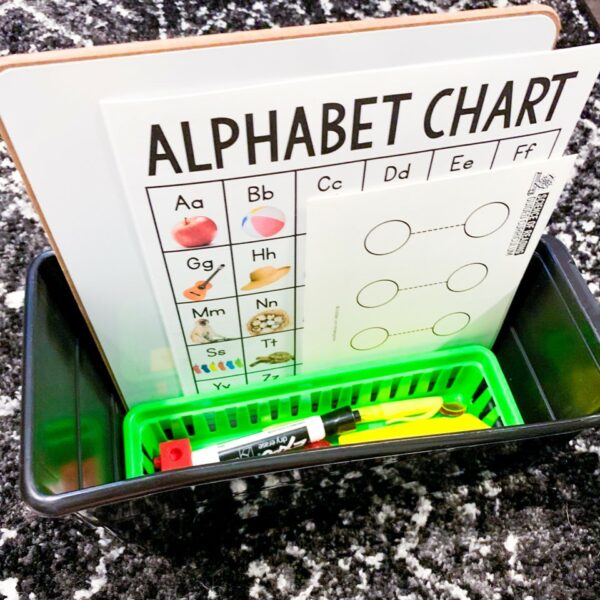
Do you love free stuff?
SoR Small Groups Toolkit
Grab a free Science of Reading Small Groups Toolkit to help set up your student supplies at your small groups table.
You will also want to give your students plenty of time to practice and review letters and sounds during literacy centers.
Tip: Make sure that you only give students work with letters and sounds they have already been introduced to. Literacy centers should always be review!
Ideas for Alphabet literacy centers:
- Science of Reading Literacy Centers
- Science of Reading Alphabet Centers
- No prep alphabet centers
- Letter formation centers
Answering Your Frequently Asked Questions
Below i’m answering some of the most frequently asked questions about planning for small groups with pre-readers, or students who are still learning the alphabet.
If you have more questions or want continued support, you might love our free teacher Facebook group!
How long should an entire small group lesson take?
It will vary as you are getting students used to the routine, but I would plan for 15-20 minutes. This can be broken down in this way:
- Warm up: 1-2 minutes
- Mini lesson: 2-3 minutes
- Phonemic awareness: 3-5 minutes
- Decodable reader + fluency: 5 minutes
- Letter formation: around 5 minutes
Should I use these pre-reader lessons with all of my Kindergarten students?
No, I would assess your students’ letter and letter sound knowledge and see who needs them. You may have students who are ready to start the year reading!
You can grab a free placement assessment here.
Should I begin these small group lessons right away?
You can, but in Kindergarten I suggest waiting at least five weeks. This gives you time to really get students independent and into a literacy centers routine so that you can pull small groups with limited interruptions.
It also gives you time to introduce a letter a day whole group to give students some background knowledge.
Can I try out a sample lesson to see if it’s a good fit for me and my students?
Yes! You can try out the letter Mm lesson as a free sample here.

Can I change the letter order?
Yes! I give you a recommended letter order which is based on letter sound frequency. However, these lessons can be used in any letter order to fit your district’s mandates.
What if my students master the letters and sounds quickly. Should I still do every lesson?
No, you can move your students on to the next unit – beginning readers CVC. One key component of Science of Reading aligned instruction is that you are using data to drive your instruction. You will want to be continuously assessing and monitoring students.
What if my students are need more practice with letter sounds and/or are not quite ready to decode at the end of this unit?
I developed the Bridge Unit specifically for this scenario! The Bridge Unit is an intervention unit designed to give students an intensive letter sounds review and support as they begin decoding and encoding. Each lesson only adds 1 letter sound and most books only contain 1-2 words per page.
Still have questions? Reach out to me at natalielynnkindergarten(at)gmail(dot)com.
Natalie


